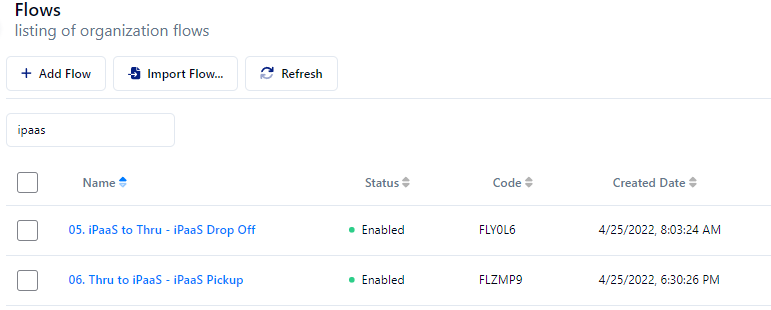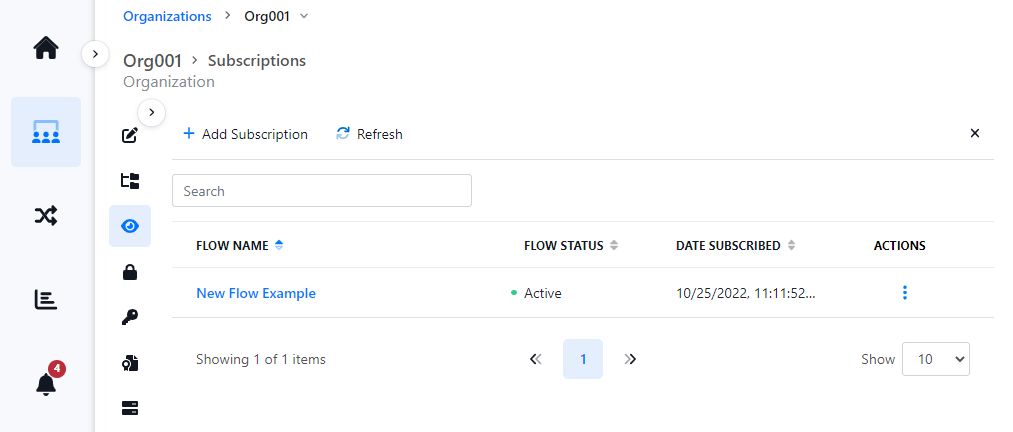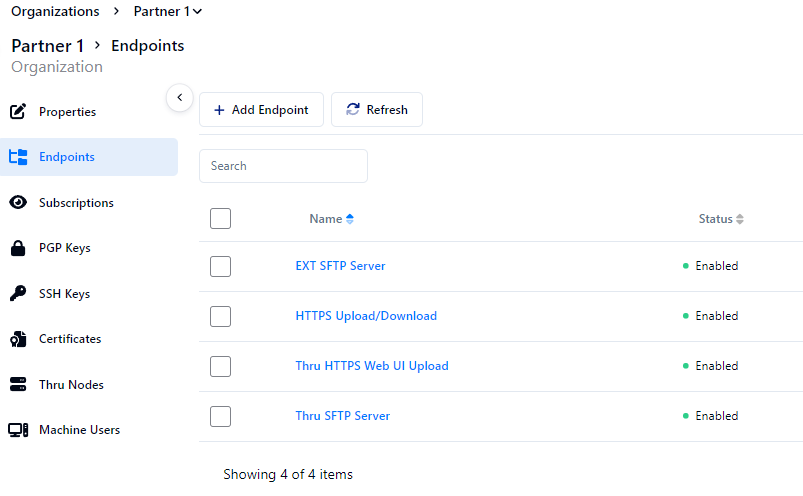Main Concepts of Thru MFT
Flows are file exchange processes established within Thru MFT. They facilitate the transfer of files between Mule flows and Organizations (File Exchange Partners) in alignment with specific business processes.
Flows are efficiently managed within the Thru MFT portal:

Organizations are essentially business entities that facilitate the exchange of files among various parties, including individuals, enterprises, and vendors. They are established to empower business partners and users, allowing for self-management of access to diverse workflows.
Organizations subscribe to Flows to exchange files with specific Mule flows.
Organizations can be subscribed to one or multiple Flows for exchanging files with different Mule flows.
Organization subscriptions to Flows are managed by enterprise administrators or self-managed by Organization administrators via the Thru MFT portal:

End Points – These are designated source or target locations established for organizations to transmit and receive data and files, such as Amazon S3, FTP servers, and more.
Multiple End Points can be created in each Organization.
Endpoints can be managed by enterprise administrators or self-managed by Organization administrators.
Endpoints exchange files between external repositories of the Organization and Thru MFT is able to participate in multiple Flows at a time.

Using the Thru Connector:
The Thru MFT Connector allows you to maintain all the advantages of Thru MFT while easily integrating with Mulesoft API’s.
In each Mule flow, the Thru MFT Connector is configured to communicate with a single Flow. One Mule flow connects to one Thru MFT Flow, using the Thru MFT Connector for Mulesoft in One-to-One mapping.
Retention - Thru MFT service has a build-in file repository that scales horizontally, storing the files that are transferred between Mule flow and Organization End Points and supports flexible retention policies.
Simple API - Thru MFT service implements simple and comprehensive REST API which is exposed via Thru MFT connector API, see Connector Operations.
This document assumes that you are familiar with Mule, Anypoint Connectors, and Anypoint Studio. To increase your familiarity with Studio, consider completing a Anypoint Studio Tutorial.
This page requires basic knowledge of Mule Concepts, Elements in a Mule flow, and Global Elements.
